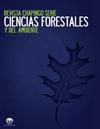气候变化将影响墨西哥斑点猫头鹰的分布(Strix occidentalislucida Nelson 1903)
IF 0.6
4区 农林科学
Q3 Agricultural and Biological Sciences
Revista Chapingo Serie Ciencias Forestales Y Del Ambiente
Pub Date : 2022-04-30
DOI:10.5154/r.rchscfa.2021.10.066
引用次数: 0
摘要
简介:墨西哥斑猫头鹰(Strix occidentalis lucida Nelson 1903)是一个受到栖息地破坏威胁的亚种,对气候变化敏感。分布于美国和墨西哥的古老森林中。目的:确定墨西哥斑点猫头鹰在两种气候变化情景(SSP 245和SSP 585)下的潜在历史(1970-2000)和未来(2021-2040、2041-2060和2061-2080)分布。材料和方法:使用R软件和MaxEnt算法、155个地理上不相关的发生记录和5个生物气候层对潜在分布进行建模。对美国和墨西哥的八个环境管理单位的环境适宜性区域进行了预测。结果与讨论:三个温度变量对模型预测的贡献率为93.1%:平均日较差(44.8%)、最热月的最高温度(28.8%)和最冷季度的平均温度(19.5%)。未来的情景显示,在七个管理单元中,该鸟的合适生物气候空间逐渐和持续丧失,尤其是在墨西哥东部马德雷山脉的高排放情景(SSP 585)中(-56.1%-96.4%)。美国南落基山脉环境管理部门是唯一一个在所有时期都获得适当生物气候空间的部门(51.3%至167.2%)。结论:尽管变化不大,但生物气候适宜性区域的丧失始于2030年,并在2041年增加,因此,气候变化是目前对这种猛禽的威胁。本文章由计算机程序翻译,如有差异,请以英文原文为准。
Climate change will affect the distribution of the Mexican Spotted Owl (Strix occidentalislucida Nelson 1903)
Introduction: The Mexican spotted owl (Strix occidentalis lucida Nelson 1903) is a subspecies threatened by habitat destruction and sensitive to climate change. It is distributed in the old forests of the United States and Mexico. Objective: To determine the potential historical (1970-2000) and future (2021-2040, 2041-2060 y 2061-2080) distribution of the Mexican spotted owl under two climate change scenarios (SSP 245 and SSP 585). Materials and methods: Potential distribution was modeled using the R software with the MaxEnt algorithm, 155 geographically uncorrelated occurrence records, and five bioclimatic layers. Areas of environmental suitability were predicted for eight environmental management units in the United States and Mexico. Results and discussion: Three temperature variables contributed 93.1 % to the model prediction: mean diurnal range (44.8 %), maximum temperature of the warmest month (28.8 %) and average of the coldest quarter (19.5 %). Future scenarios showed gradual and continuous losses of suitable bioclimatic space for the bird in seven management units, especially in the high emissions scenario (SSP 585) in the Sierra Madre Oriental de México (-56.1 to -96.4 %). The Southern Rocky Mountains environmental management unit in the United States was the only one that gained suitable bioclimatic space (51.3 to 167.2 %) in all periods. Conclusion: Although changes are not significant, the loss of areas of bioclimatic suitability begins in 2030 and increases in 2041 and, therefore, climate change represents a current threat to this bird of prey.
求助全文
通过发布文献求助,成功后即可免费获取论文全文。
去求助
来源期刊
CiteScore
1.20
自引率
16.70%
发文量
0
审稿时长
>12 weeks
期刊介绍:
The Revista Chapingo Serie Ciencias Forestales y del Ambiente (RCHSCFA) is a scientific journal that aims to raise awareness of high-quality research products related to forest, arid, temperate and tropical environments in the world. Since its foundation in 1994, the RCHSCFA has served as a space for scientific dissemination and discussion at a national and international level among academics, researchers, undergraduate and graduate students, forest managers and public/private entities that are interested in the forest environment.
All content published in the journal first goes through a strict triple-blind review process and is published in the following formats: Scientific Articles, Review Articles, Methodologies, Technical or Technological Notes.

 求助内容:
求助内容: 应助结果提醒方式:
应助结果提醒方式:


